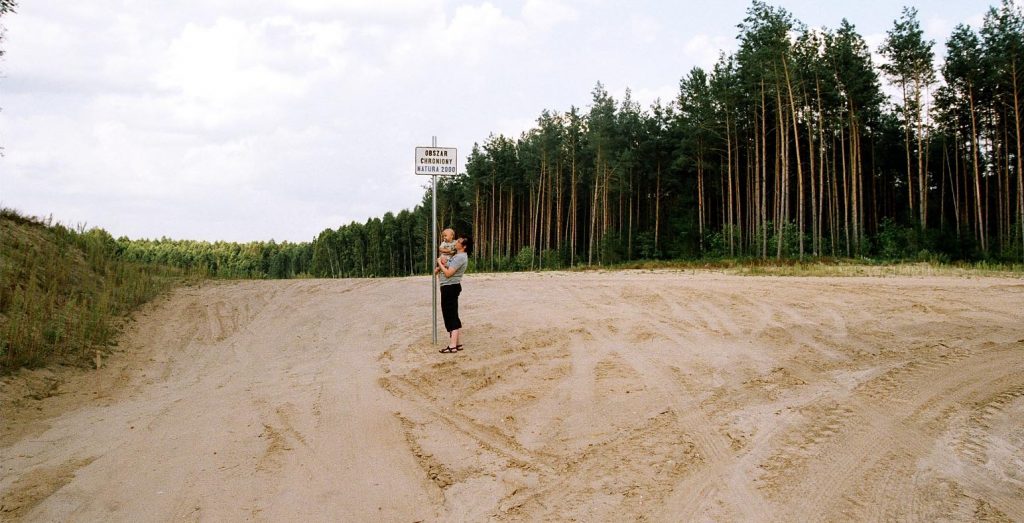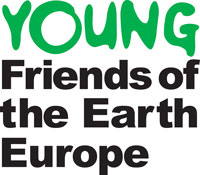Brussels, 16 April – CEE Bankwatch Network and Friends of the Earth Europe today warned that environmentally destructive and economically unsound projects, at a total cost of 23 billion euro, in the ten new member states of central and eastern Europe, may receive an ‘un-smart’ green light as the European Union seeks to rapidly deploy billions of euros to offset the worsening economic crisis.
Keti Medarova-Bergstrom discuss the new map of controversial projects and the sustainable use of EU funds.
Launching an updated map of 55 major infrastructure projects [1], the campaign groups called for smarter, more effective and more transparent use of EU public money that can deliver long-term jobs and environmental added-value for a region that is now in the grips of recession and struggling with still highly inefficient use of energy. They highlight projects such as motorways and incinerators, the bulk of which are still in line for funding from the EU structural and cohesion funds and the European Investment Bank, and several of which are already being funded.
Magda Stockiewicz, director of Friends of the Earth Europe, said: “The EU funds have always been a key source of financing for countries in central and eastern Europe and they are set to play an even more important role as the economic crisis unfolds. It is not enough to simply accelerate EU spending. Now more than ever the spending must be smarter, more effective and more transparent, and most importantly it needs to combat climate change, the most urgent and severe crisis of all.
“This is a unique opportunity for the new member states to harness available public finance and shift their economies towards low carbon development. It is the sensible thing to do if these countries want to remain competitive.”
Bankwatch and Friends of the Earth Europe previously outlined the systemic problem of planning major projects in central and eastern European countries, warning that many of the potential or planned projects are economically, environmentally and socially controversial and risk putting the new member state countries on a long-term climate intensive development path. The updated map shows how the countries continue to be preoccupied with the same controversial projects, and how unsustainable trends are increasing.
Keti Medarova-Bergstrom, EU funds coordinator for Bankwatch and Friends of the Earth Europe, said: “In the last year we have seen incineration projects that seek EU money jump from 18 to 22. If approved, these massive end-of-pipe facilities will block EU funding for more cost-effective and easy to implement solutions like separate collection, reuse and recycling schemes.
“In the transport sector, we have seen some positive developments that should be proof to public purseholders across the region that infrastructure needs can be reconciled with the natural and social environment. In the case of the Via Baltica expressway, one of the most controversial projects to feature on the 2008 map, just last month the Polish government decided to modify the route of one critical section – the Augustow bypass – in order to avoid cutting through the Rospuda Valley, a renowned Natura 2000 site. Other road proposals along the Via Baltica corridor continue to ring alarm bells and reflect the bigger issue of bias towards road building in the transport planning in these countries.”
Anelia Stefanova, EU Affairs cooordinator for Bankwatch, said: “We welcome the European Commission’s efforts to help CEE countries tackle the crisis, but what we see on the table right now are a number of infrastructure projects where the development and stimulus effects, not to mention the climate impacts, are highly questionable. The vast majority of the projects that feature on our new map have yet to receive funding, which means that most of the environmental harm and money wastage can still be prevented. The economic crisis should not be used as a reason to deploy EU billions for controversial projects before a proper assessment of alternatives, a stringent application of EU environmental law and enhanced transparency mechanisms are in place.”
***
Notes for editors:
[1] The updated interactive map of projects for 2009 can be found online here.Watch Keti Medarova-Bergstrom discuss the new map of controversial projects as well as positive cases that show the way for sustainable use of EU funds here.







